Have you ever wondered if frost will kill grass seed? Frost can indeed harm grass seeds, but the good news is that most grass seeds are resilient and can withstand extreme cold.
Grass seeds can withstand extreme cold, but young seedlings are susceptible to frost damage. Frost can freeze the uppermost layer of soil, depriving seedlings of water and nutrients, which can lead to their demise.
While frost can be a concern for many gardeners and homeowners, understanding the impact of frost on grass seed is essential for a lush, healthy lawn.
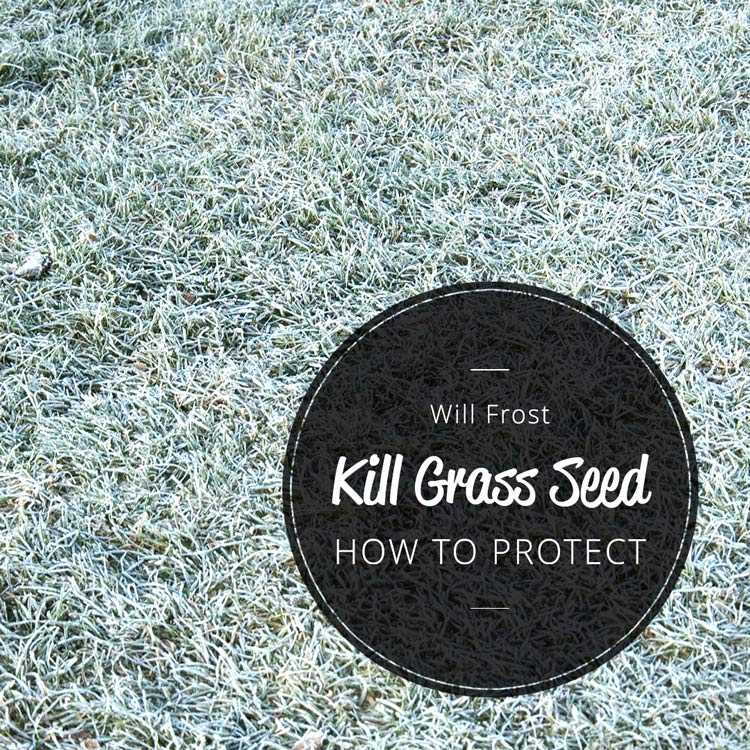
What we cover
ToggleThe Dangers of Frost for Young Seedlings
When grass seedlings are exposed to frost, water accumulation around the seeds increases the risk of mold growth and seed rot.
Several measures can be taken to protect your young grass seedlings from frost, such as watering, covering them to retain daytime heat, and avoiding foot or vehicle traffic on frosty yards.
How to Protect Grass Seed from Frost Damage:
Using mulch as a protective barrier, covering seedlings with tarps or linen, and employing proper watering techniques can all help keep your grass seed safe from the cold.
It’s also essential to remember that planting grass seed at the right time plays a crucial role in its ability to withstand frost.
Cool-season grasses should be planted in late summer or early fall, while warm-season grasses should be planted in late spring or early summer.
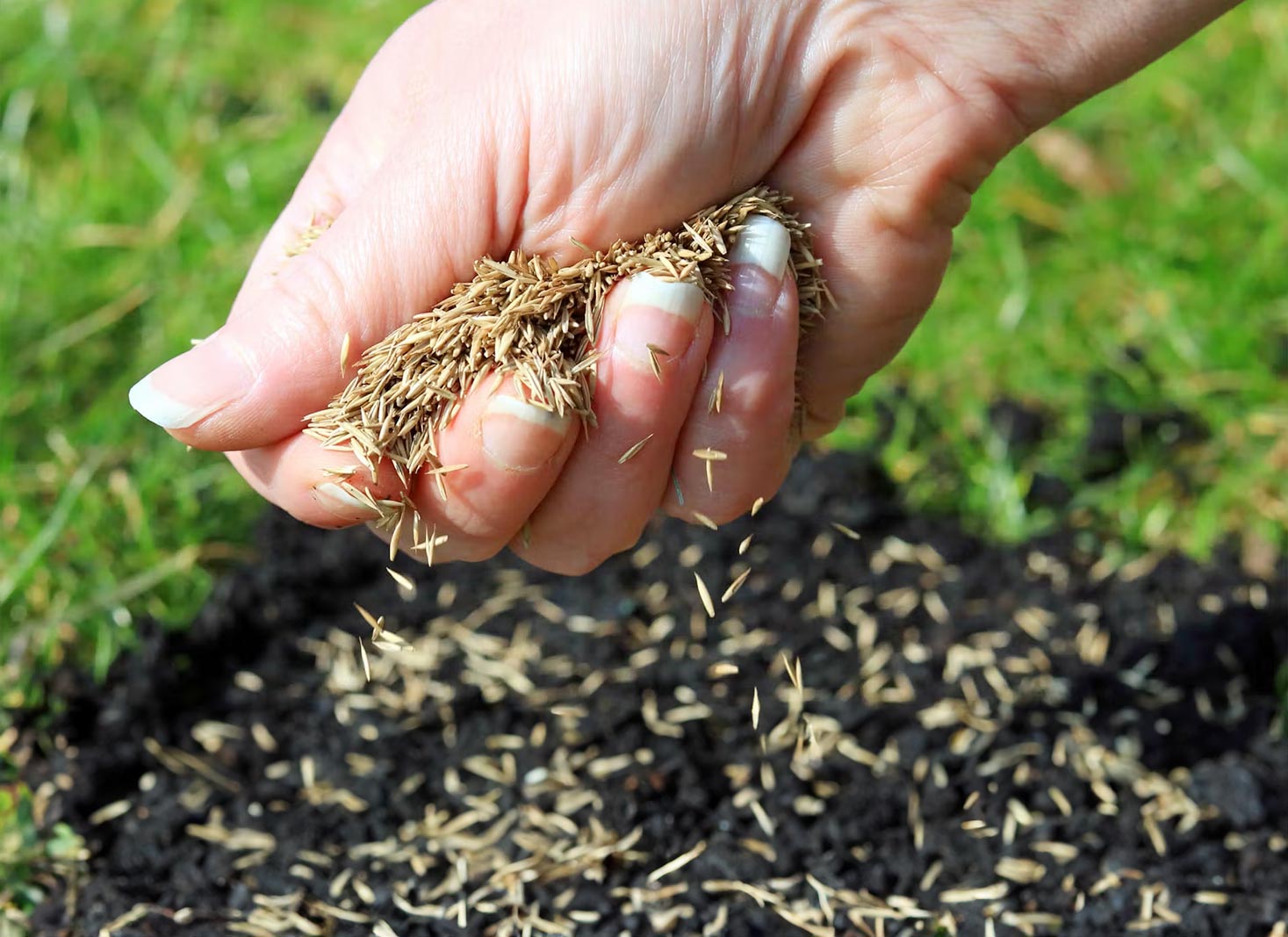
Planting Grass Seed: Timing Matters
Planting grass seed at the right time is essential for successful germination and the resilience of your lawn to frost.
The ideal planting season varies depending on whether you are planting
cool-season or warm-season grasses. It’s crucial to consider soil temperatures and the likelihood of frost when determining the best time to plant grass seed.
Ideal Planting Seasons for Cool-Season Grasses
The best time to plant cool-season grasses is in late summer or early fall when the air temperature is between approximately 60- and 70 degrees Fahrenheit.
Cool-season grasses need soil temperatures of 55 degrees or more for proper germination.
Therefore, these grasses don’t fare well in cold climates. Planting during this time allows grass seedlings to establish deep roots before winter weather and potential frost, ensuring a healthy, thriving lawn.
By planting cool-season grasses during this optimal period, you give your grass seed the best chance of survival.
Ideally, you can avoid frost risks in late summer and early fall.
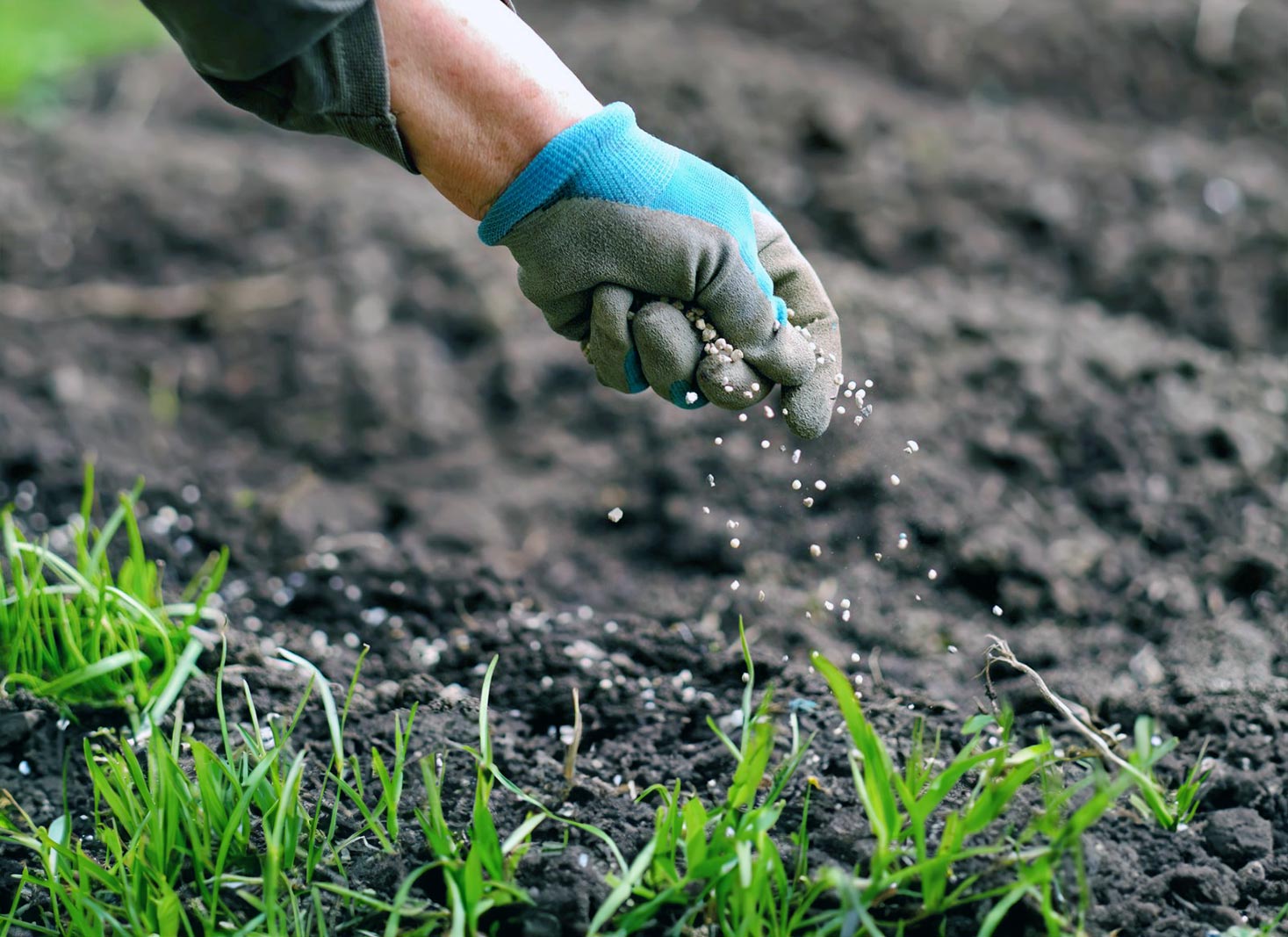
Best Time to Sow Warm-Season Grasses
The optimal planting period for warm-season grasses is between late spring and early summer when soil temperatures are above 65°F at 3 inches below the surface.
Warm-season grasses require higher soil temperatures for proper germination and should be planted when daily air temperatures are at least 80 degrees Fahrenheit.
By planting warm-season grasses during this optimal period, you give your grass seed the best chance of survival.
The favorable temperatures and reduced likelihood of frost make late spring and early summer the perfect time to sow warm-season grasses.
Tips for Protecting Grass Seed from Frost
Using Mulch as a Protective Barrier
Mulch provides an effective protective barrier against frost by insulating the soil against rapid freezing and thawing.
When applied properly, mulch can help stabilize the soil temperature near freezing, allowing plants to absorb additional water and protect grass seeds from frost damage.
Not only does mulch protect grass seed from frost, but as it decomposes, it also introduces nutrient-rich organic material into the soil.
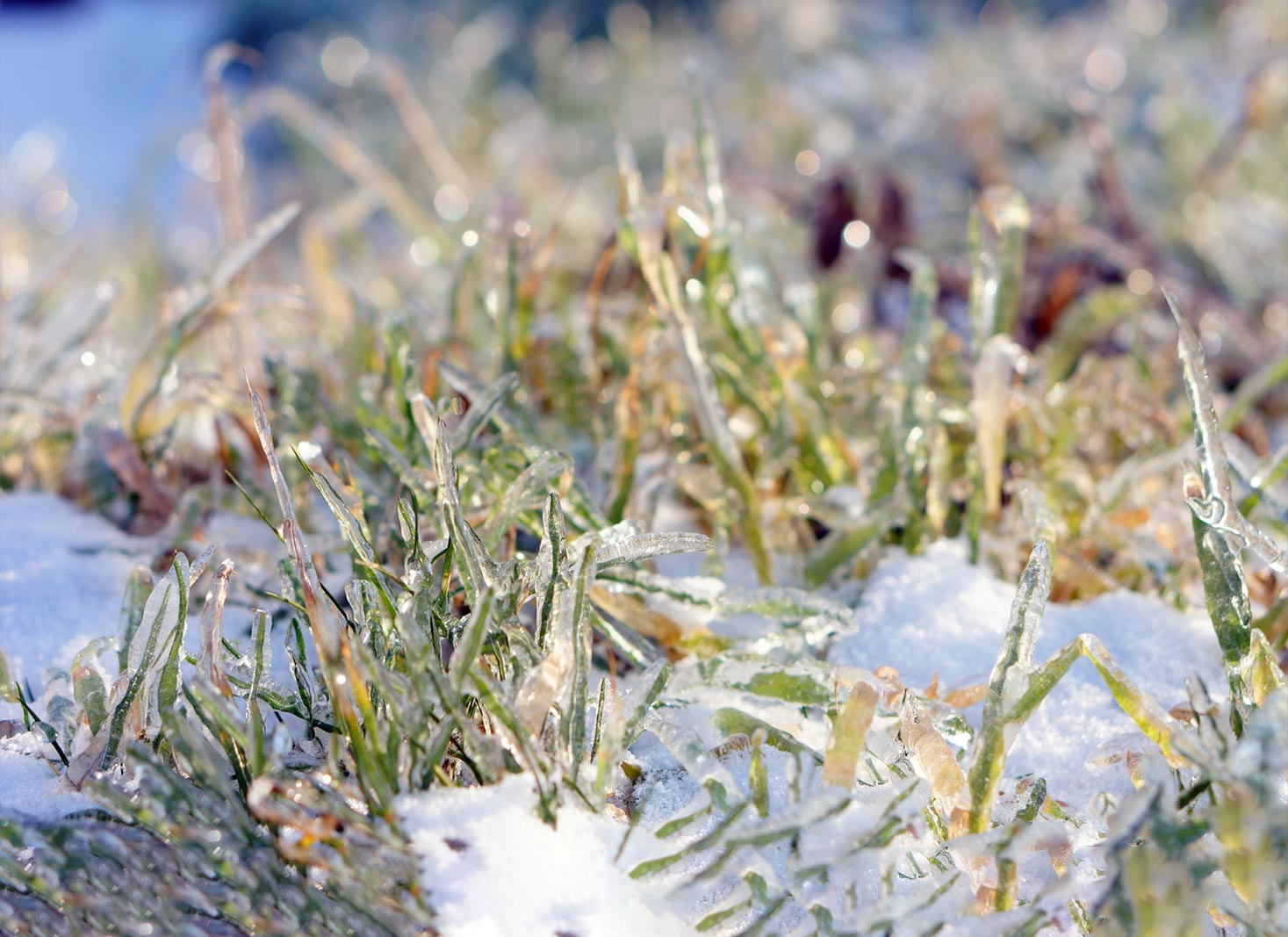
Covering Seedlings with Tarps or Linen
Tarps or linen can be used to cover grass seedlings during freezing nights, providing insulation against frost and helping to maintain the ground temperature.
It’s important to note, however, that tarps should not be used for extended periods as they can retain moisture and lead to mold growth.
Instead, consider using garden fabric or row cover, allowing moisture to escape while protecting plants from frost and insects.
To use fabric covering effectively, drape it over the seedlings and secure it with stakes or weights to ensure it doesn’t blow away.
Proper Watering Techniques
Maintaining proper watering techniques is essential for protecting grass seeds from frost damage.
Watering deeply in the evening allows the moisture to be released overnight, helping to protect the grass seed from frost. It’s important to avoid overwatering, as this can lead to mold and rot growth.
Moreover, refraining from accessing the lawn until the grass is robust enough to endure frost is crucial for grass seed survival.
What to Do if Frost Strikes After Planting Grass Seed
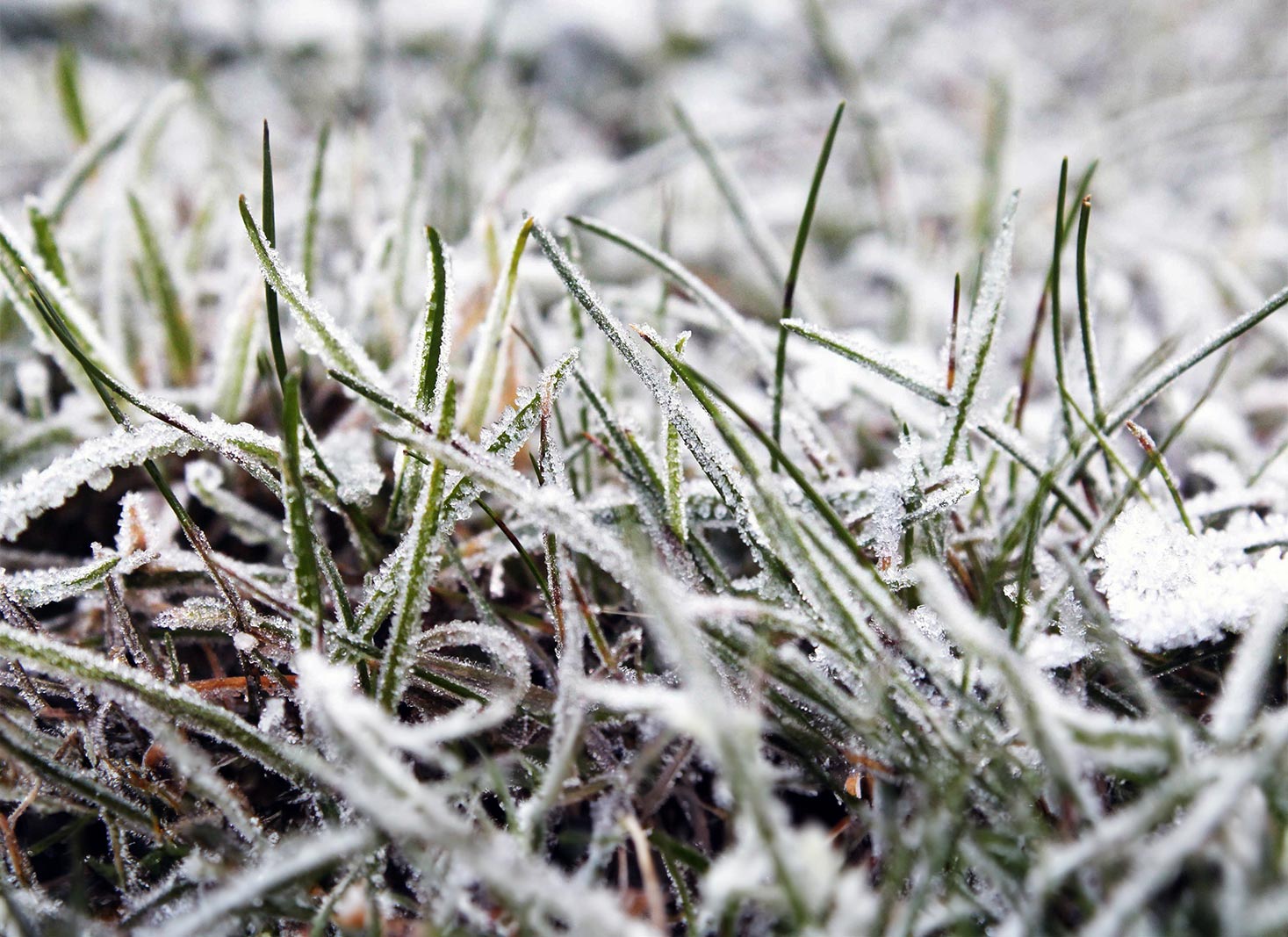
If frost strikes after planting grass seed, assessing the damage and considering recovery strategies such as reseeding or overseeding is essential.
The first step is to evaluate the extent of the damage and determine if any grass seed has been affected by the frost.
It’s also important to monitor the seeded area for any signs of mold or rot, as these can develop when water accumulates around the seeds due to frost.
Once the damage has been assessed, consider recovery strategies like reseeding or overseeding to replace any lost or damaged grass seed.
By taking proactive steps to address the impact of frost on your grass seed, you can help ensure the continued health and beauty of your lawn.
Assessing the Damage
To evaluate the destruction caused by frost on grass seed, look for a white or beige appearance resulting from the seed being crushed.
To determine if the plant is still viable, perform the scratch test on the seedlings to see if they’re still green and healthy.
Assessing the damage immediately following the frost event is crucial in determining the appropriate recovery strategy.
In addition to assessing the immediate damage, it’s also important to monitor the seeded area every week following periods of extended frost.
Recovery Strategies
Several recovery strategies can be employed to help your grass seed bounce back from frost damage.
Aerating the soil, eliminating debris and dead grass, and removing weeds are all important steps in promoting healthy grass growth.
Reseeding or overseeding can also be beneficial in replacing any grass seed that may have been damaged by frost.
Fertilizing your lawn with an autumn/winter fertilizer high in potassium can also help strengthen your grass’s resistance to disease and frost. Maintaining proper hydration of the grass is another key factor in preventing light frost damage.
Yard Microclimates and Grass Seed Survival

Yard microclimates can have a significant impact on the survival of grass seed. Localized areas of climate differ from the general climate of an area due to factors such as sunlight, shade, wind, and moisture.
Identifying Microclimates
To identify microclimates in your yard, observe your garden throughout the year, noting any surrounding buildings, topography, and trees that may affect your yard’s climate.
Map your garden’s sun exposure, moisture, and shade, and consider how these factors may influence grass seed survival in different areas of your yard.
Understanding the microclimates in your yard can help you make informed decisions about where to plant grass seed and which varieties are best suited for each area.
By considering these factors, you can optimize your lawn’s health and resilience to frost.
Planting Strategies for Microclimates
Once you have identified the microclimates in your yard, you can adjust your planting strategies to accommodate these unique conditions.
For example, planting grass seeds in areas with higher sun exposure and less shade can help protect the seed from frost. Planting grass seed in areas with more moisture can also help protect the seed from frost.
By tailoring your planting strategies to the specific microclimates in your yard, you can enhance the survival rate of your grass seed and create a more robust, beautiful lawn.
As you can see, understanding your yard’s microclimates and adjusting your planting strategies accordingly can make a significant difference in the success of your grass seed.
FAQ's
In conclusion, grass seeds can survive a frost. However, it may be difficult for the seed to germinate if there is a frost. Therefore, it is best to avoid planting grass seeds when there is a risk of frost to ensure the best chance of successful growth.
50°F is too cold for grass seed. Any temperature below 50°F will delay or prevent the germination of grass seeds, so avoid planting them if the expected temperature is that low.
Protect your new grass seed from frost by deep-watering it every evening and using a professional irrigation system from Green & Black LLC.
This will help retain moisture and create enough heat to prevent freezing, allowing the grass to grow healthy and strong.
All in all, October is an appropriate time for seeding your lawn and taking advantage of cooler temperatures and more consistent rainfall.
October is ideal for maximizing the germination success of grass seeds.
